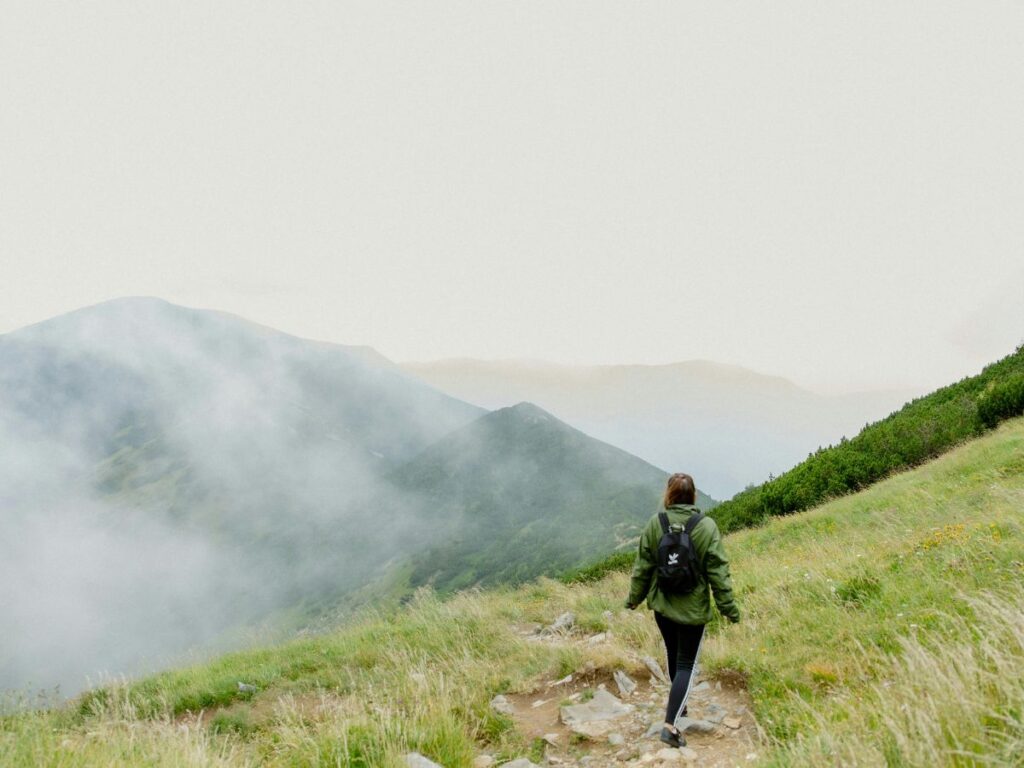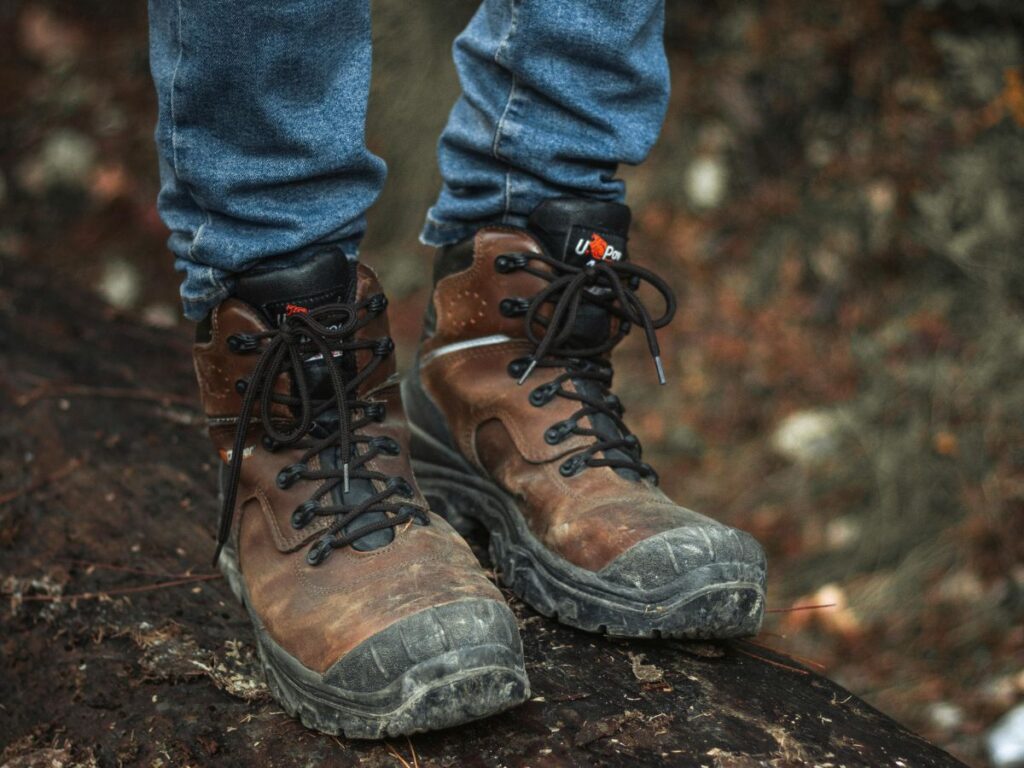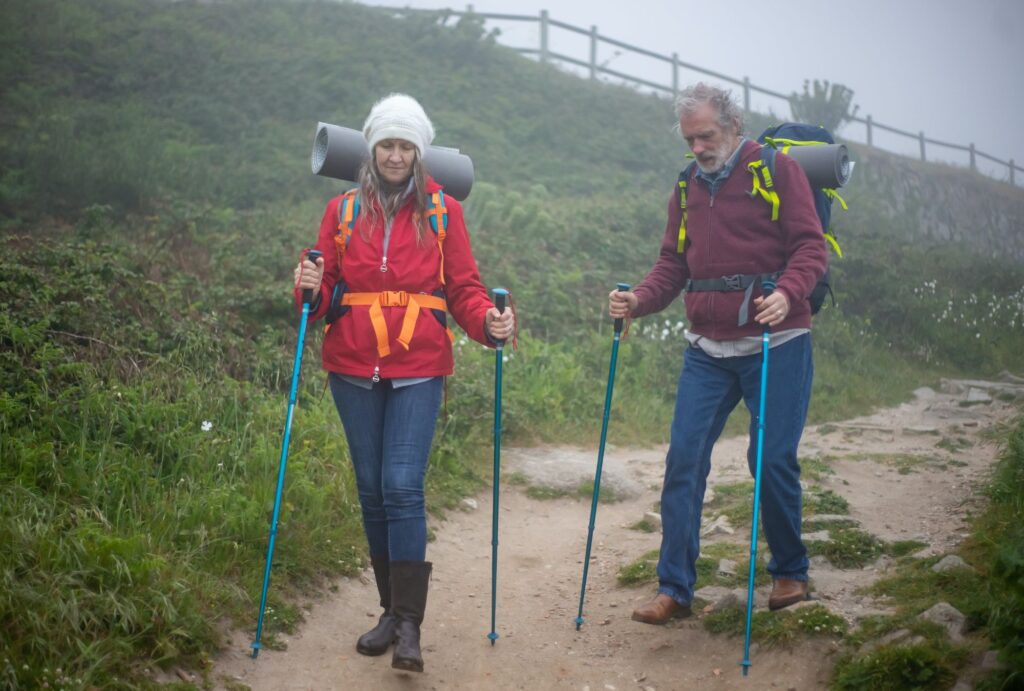Nestled in the heart of the Sierra Nevada, the Mono Pass Trail beckons adventurers with its breathtaking vistas and trails that whisper tales of the past. This enchanting pathway is not just a route; it’s a journey through time, where each step elevates you through stunning landscapes and closer to the sky. With its manageable Mono Pass Trail length and the intriguing elevation changes, hikers of varying abilities find themselves drawn to its trailhead, eager to explore what lies beyond. As you prepare to embark on this adventure, let this guide be your compass to the wonders of hiking to Mono Pass Trail, where nature’s beauty unfolds at every turn. Whether you’re a seasoned hiker or someone looking to immerse themselves in the tranquility of the Sierra Nevada, the Mono Pass Trail offers an experience that promises to captivate your heart and enrich your spirit.
The Mono Pass Trail Overview
The Mono Pass Trail, a gem tucked away in the Eastern Sierra Nevada, serves as a gateway to some of the most spectacular landscapes California has to offer. This trail, accessible from the Mono Pass Trailhead, invites hikers to traverse through diverse terrains, showcasing the rich biodiversity and geological formations that define the Sierra Nevada range. The Mono Pass Trail length stretches through miles of alpine scenery, leading adventurers through meadows, past crystal-clear streams, and over rugged passes that offer panoramic views of the surrounding peaks and valleys.
Geographically, the trail is characterized by its varying terrain, starting with relatively gentle slopes that gradually ascend to more challenging elevations. The Mono Pass Trail elevation reaches impressive heights, providing hikers with breathtaking vistas of the High Sierra, including glimpses of Mono Lake in the distance, a geological marvel in its own right.
The history and cultural significance of the Mono Pass Trail run deep. Historically, it served as a vital route for Native American tribes, who traversed these mountains for trading purposes. Later, it became an important passage for miners during the gold rush era, evidence of which can still be found along the trail. This rich history adds a layer of cultural depth to the hiking experience, allowing visitors to reflect on the lives of those who walked these paths long before it became a destination for outdoor enthusiasts.
Hiking to Mono Pass Trail is not just an outdoor activity; it’s an immersion into the natural and historical essence of the Sierra Nevada. The trail’s blend of natural beauty, challenging terrain, and historical significance makes it a must-visit for anyone looking to explore the depth and breadth of California’s wilderness. Whether you’re drawn by the allure of high mountain passes, interested in the unique geography and terrain, or captivated by the area’s rich cultural tapestry, the Mono Pass Trail offers an unparalleled adventure into the heart of the Eastern Sierra.

Getting to the Mono Pass Trailhead
Getting to the Mono Pass Trailhead is the first step in your adventure to explore one of the Sierra Nevada’s most beautiful trails. Located near the eastern border of Yosemite National Park, the trailhead is accessible to hikers looking to experience the majestic beauty of Mono Pass Trail. Here’s how you can reach this starting point and what you can expect in terms of parking and facilities.
Directions to Mono Pass Trailhead
From the nearest town of Lee Vining, take Highway 120 (Tioga Road) west into Yosemite National Park. Continue on Tioga Road for approximately 11 miles. The Mono Pass Trailhead is located off Tioga Road, with clear signage leading you to the starting point of your hike. It’s important to note that Tioga Road is subject to seasonal closures, typically from late fall through late spring, due to snow. Thus, planning your trip during the open months is crucial to ensure access to the trailhead.
Parking and Facilities Available at the Trailhead
Upon arriving at the Mono Pass Trailhead, hikers will find a parking area designated for trail users. Although parking is available, it can fill up quickly during peak hiking seasons, so arriving early in the day is advisable to secure a spot. In terms of facilities, there are basic amenities available at the trailhead, including restrooms. However, it’s important to come prepared with sufficient water and supplies, as there are no services like food or water available for purchase at the trailhead. Visitors should also be mindful of the need for a wilderness permit if planning to backpack overnight in the area, which can be obtained from the Yosemite National Park service. Day hikers do not need a permit for the Mono Pass Trail.
Finding directions to Mono Pass Trailhead is straightforward, and with adequate planning, you’ll be on your way to exploring the stunning landscapes and historical pathways that make Mono Pass Trail a must-visit destination for hikers and outdoor enthusiasts.
Mono Pass Trail Details
The Mono Pass Trail, renowned for its breathtaking vistas and rich history, offers hikers an unforgettable journey through the Eastern Sierra. Understanding the Mono Pass Trail length and the average time required to complete the hike is crucial for planning your adventure, ensuring you’re fully prepared to embrace the natural beauty that awaits.
Mono Pass Trail Length: The trail extends approximately 8 miles round trip from the Mono Pass Trailhead to the pass itself and back. This distance allows for a full-day excursion, providing ample opportunities to enjoy the scenic views, explore side trails, or simply take in the tranquility of the High Sierra.
Average Time to Complete the Hike: On average, hikers can expect to spend around 4 to 6 hours trekking the Mono Pass Trail. This duration includes time for short breaks, photography, and enjoying the panoramic landscapes the trail offers. The time to complete the hike ultimately depends on individual pace, weather conditions, and how much time is spent at the pass or exploring nearby attractions. It’s important for hikers to assess their own fitness levels and hiking experience when planning their trip to Mono Pass Trail. The trail’s elevation gain and the high altitude can make the hike more challenging, especially for those not accustomed to hiking in mountainous terrain. Therefore, allowing extra time for acclimatization and rest stops is advisable, especially if hiking to Mono Pass Trail for the first time.
By understanding the Mono Pass Trail length and the average time required to complete the hike, adventurers can better prepare for their journey, ensuring a safe and enjoyable experience amidst the stunning beauty of the Sierra Nevada.
Elevation and Difficulty
The Mono Pass Trail presents hikers with a moderate challenge, combining stunning alpine scenery with a test of endurance due to its elevation gain and altitude. Understanding the Mono Pass Trail elevation gain and the overall difficulty level is key to preparing for this hike, ensuring that adventurers can enjoy their journey safely and comfortably.
Mono Pass Trail Elevation Gain: The trail ascends to approximately 2,000 feet in elevation gain from the Mono Pass Trailhead to the pass. This gradual ascent is spread over the course of the 4-mile journey to the pass, making the incline manageable for hikers with a moderate level of fitness. The highest point of the trail reaches about 12,000 feet above sea level, offering not only breathtaking views but also a taste of high-altitude hiking.
Difficulty Level: Given its elevation gain and high altitude, the Mono Pass Trail is considered to be of moderate difficulty. The trail is well-marked and maintained, but the combination of distance, elevation gain, and altitude can make it a challenging endeavor for those who are less experienced or not acclimatized to higher elevations.
Tips for Hikers Based on the Trail’s Difficulty
- Acclimatization: Spend a day or two acclimatizing to the altitude if you are not accustomed to high-altitude environments. This can help prevent altitude sickness and improve your overall hiking experience.
- Pace Yourself: Start early to allow plenty of time to complete the hike without rushing. Take regular breaks, especially as the elevation increases, to let your body adjust.
- Hydration and Nutrition: Bring plenty of water and snacks. High-altitude hiking increases fluid loss, so it’s important to stay well-hydrated and maintain energy levels with nutritious snacks.
- Gear: Wear appropriate hiking boots for rugged terrain and dress in layers to adjust to changing temperatures. A daypack with essentials such as a map, compass, first-aid kit, and rain gear is also recommended.
- Weather Awareness: Check the weather forecast before heading out. Weather in the Sierra Nevada can change rapidly, especially at higher elevations, so be prepared for varying conditions.
By taking these considerations into account, hikers can confidently tackle the Mono Pass Trail, enjoying the challenge it presents while staying safe and making the most of the stunning landscapes it traverses.

Best Time to Visit
Determining the best time to visit the Mono Pass Trail is essential for ensuring an enjoyable hiking experience, taking full advantage of the trail’s natural beauty while being mindful of the Sierra Nevada’s variable climate. The climate and weather conditions play significant roles in shaping the trail conditions, influencing both accessibility and the overall hiking experience.
Climate and Ideal Seasons for Hiking to Mono Pass Trail
The ideal months for hiking to Mono Pass Trail are from late June to early October. During this period, the weather is most favorable, with warmer temperatures, clearer skies, and minimal snow on the trail. The summer months of July and August offer the warmest conditions, making them a popular time for hikers. However, even in summer, temperatures can vary widely from day to night, and weather patterns can change rapidly in the high Sierra.
Spring and early summer may see the trail still covered in snow or muddy from the melt, particularly in areas of higher elevation or shaded sections of the trail. As such, if planning a trip during these transitional periods, it’s crucial to be prepared for snow and potentially icy conditions.
Fall brings cooler temperatures and changing foliage, providing a beautiful and serene hiking experience. However, as winter approaches, the likelihood of snow increases, which can impact trail accessibility and safety.
Weather Considerations and How It Affects the Trail Conditions
Weather in the Sierra Nevada can be unpredictable, with sudden storms, rain, and even snowfall possible during the hiking season. These conditions can affect trail visibility, safety, and comfort. It’s important for hikers to check the weather forecast before embarking on their journey to Mono Pass Trail and to be prepared for changing conditions. This includes packing appropriate gear, such as rain protection, extra layers for warmth, and navigation aids. Additionally, the trail’s high elevation means that UV exposure can be more intense, even on cooler or overcast days. Sun protection, including sunscreen, hats, and sunglasses, is essential.
Understanding the climate and ideal seasons for hiking to Mono Pass Trail, along with being prepared for the variable weather conditions, will ensure that hikers can safely enjoy the beauty and challenges that the trail offers. Always prioritize safety and preparedness when planning your hike to ensure a memorable and enjoyable experience on the Mono Pass Trail.
What to Expect While Hiking
Hiking to Mono Pass Trail offers an unforgettable experience through the Eastern Sierra, marked by breathtaking scenic views and notable landmarks that encapsulate the essence of this majestic region. As you embark on this adventure, the trail unfolds a tapestry of natural wonders, from alpine meadows to towering peaks, each step revealing a new vista more stunning than the last.
Scenic Views and Landmarks
Meadows and Streams: Early in the hike, the trail meanders through lush meadows dotted with wildflowers, particularly vibrant in the late spring and early summer months. Crystal-clear streams cascade through these meadows, offering serene spots to pause and enjoy the tranquility of nature.
Mono Lake Overlook: One of the key viewpoints along the Mono Pass Trail is the overlook of Mono Lake. This saline soda lake is a geological marvel, known for its tufa towers and birdlife. The overlook provides hikers with a panoramic view of the lake and the surrounding basin, a breathtaking sight that is worth the journey.
Summit Views: As the trail ascends, the terrain becomes more rugged, leading to the summit near Mono Pass. From here, hikers are rewarded with expansive views of the High Sierra, including glimpses of distant peaks and valleys that stretch endlessly towards the horizon. The sense of accomplishment upon reaching this elevation, coupled with the stunning vistas, makes for an unforgettable experience.
Historical Sites: Along the way, hikers may also encounter remnants of the area’s rich history, from Native American artifacts to traces of the mining boom in the Sierra Nevada. These historical sites add a layer of depth to the hike, connecting walkers with the past inhabitants of this rugged landscape.
Hiking to Mono Pass Trail is not just a physical journey but a voyage through the natural and historical heritage of the Sierra Nevada. Each viewpoint and landmark along the trail offers its own unique beauty and story, inviting hikers to pause, reflect, and appreciate the wonders of the natural world. Whether you’re capturing the panoramic views with your camera or simply taking in the sights with your own eyes, the memories of hiking to Mono Pass Trail will linger long after your journey ends.

Wildlife and Vegetation
The Mono Pass Trail offers hikers not only stunning landscapes but also the opportunity to encounter a diverse range of wildlife and vegetation. This rich biodiversity adds an extra layer of excitement to the hike, as each step brings the possibility of spotting rare flora and fauna native to the Sierra Nevada.
Flora and Fauna on the Mono Pass Trail
Vegetation: The trail traverses through various ecosystems, starting with lush meadows that bloom with wildflowers in spring and summer. Hikers can marvel at the vibrant displays of lupine, paintbrush, and Sierra columbine among others. As the trail ascends, the vegetation transitions to hardier alpine flora, including dwarf shrubs and windswept pines that have adapted to the harsher conditions at higher elevations.
Wildlife: The Mono Pass Trail is home to a variety of wildlife, offering hikers the chance to observe creatures in their natural habitat. Small mammals such as marmots and pikas are common sights among the rocks, while the skies above may feature the majestic flight of birds of prey, including hawks and eagles. Deer are often spotted in the meadows, and if you’re particularly fortunate, you might catch a glimpse of the elusive Sierra Nevada bighorn sheep in the higher, more rugged terrains.
Responsible Wildlife Viewing Practices
Observing wildlife is one of the many joys of hiking the Mono Pass Trail, but it’s important to do so responsibly to ensure the safety of both animals and humans. Here are some tips for responsible wildlife viewing:
- Always maintain a safe and respectful distance from wildlife. Use binoculars or a zoom lens for a closer look without disturbing the animals.
- Feeding wildlife can alter their natural behaviors and diet, making them dependent on human-provided food. Always keep your snacks to yourself.
- Sticking to the marked trails helps protect both the habitat and the creatures that call it home. Venturing off trail can lead to erosion and other environmental impacts.
- Move quietly and speak softly when observing wildlife. Loud noises can startle animals, causing stress.
- Carry out all your trash and belongings to keep the habitat pristine for wildlife and other hikers. Following Leave No Trace principles helps ensure the area remains wild and beautiful for future generations.
Hiking the Mono Pass Trail offers a unique opportunity to connect with nature, witnessing the flora and fauna that thrive in the Sierra Nevada. By practicing responsible wildlife viewing, hikers can enjoy these encounters while preserving the natural beauty and ecological balance of the area.
Preparation and Safety
Embarking on a hike to Mono Pass Trail requires careful preparation and a keen awareness of safety to ensure a rewarding and secure experience. Whether you’re a seasoned hiker or new to the trails, having the right gear and knowledge is essential for navigating the challenges of the high Sierra.
Essential Gear and Supplies
- A map, compass, or GPS device is crucial for staying on track, especially in areas where the trail may not be well marked.
- Carry enough water for the day, and consider bringing a water filter or purification tablets, as natural water sources may contain pathogens.
- Pack high-energy, lightweight snacks and meals. Always bring more than you think you’ll need in case of delays.
- Dress in layers to adapt to changing weather conditions. Wear sturdy hiking boots with good grip for uneven terrain.
- Include a first-aid kit, flashlight or headlamp (with extra batteries), a whistle, and a multi-tool.
- Sunglasses, sunscreen, and a hat are necessary to protect against UV rays, especially at high elevations.
- A lightweight tent, bivy sack, or emergency space blanket can be a lifesaver if you’re caught out overnight unexpectedly.
Safety Tips and Emergency Preparedness
- Check the forecast before you leave and be prepared for sudden changes in weather.
- Spend time acclimatizing to higher elevations before starting your hike to reduce the risk of altitude sickness.
- Know the signs of hypothermia, heat exhaustion, and altitude sickness. Act immediately if you or your companions show symptoms.
- Let someone know your planned route and expected return time.
- Minimize the risk of getting lost and reduce your impact on the environment by staying on designated trails.

Conservation and Etiquette
Respecting the natural environment and fellow hikers ensures that the Mono Pass Trail remains a pristine and welcoming place for all who seek its beauty. By adhering to these preparation, safety, conservation, and etiquette guidelines, your hike to Mono Pass Trail can be a fulfilling experience that respects the natural beauty of the Sierra Nevada and ensures the well-being of all who explore this magnificent trail. Follow the guidelines to minimize the adverse effects:
- Carry out all trash, leftover food, and litter to protect wildlife and the ecosystem.
- Observe animals from a distance and do not feed them. Feeding wildlife damages their health and alters natural behaviors.
- Follow local regulations regarding campfires. Use a portable stove for cooking to reduce fire risk and impact.
- Know when to yield the trail, particularly to those going uphill and to faster hikers.
- Preserve the natural peace and quiet of the wilderness for wildlife and fellow hikers by speaking softly and leaving speakers at home.
- Protect fragile habitats by not shortcutting switchbacks or creating new paths.
Key Takeaways
- Mono Pass Trail offers a unique hiking experience through the stunning landscapes of the Sierra Nevada, providing breathtaking views and a chance to explore diverse ecosystems from lush meadows to rugged mountain passes.
- Preparation is key for a successful hike, including acclimatization to high altitudes, carrying essential gear and supplies, and being aware of the weather conditions to ensure safety and enjoyment on the trail.
- The trail is accessible from late June to early October, with this period offering the most favorable weather conditions for hiking. However, hikers should be prepared for sudden weather changes and potentially snow-covered paths in early summer and fall.
- Responsible wildlife viewing and adherence to Leave No Trace principles are crucial for preserving the natural beauty and ecological integrity of the Mono Pass Trail area, ensuring it remains a pristine environment for future generations.
- Hikers can expect to encounter a rich variety of flora and fauna, adding to the trail’s allure. Observing animals from a distance and not feeding wildlife are important practices to follow.
- The Mono Pass Trail is of moderate difficulty, with an elevation gain of approximately 2,000 feet. It is suitable for hikers with moderate fitness levels, but all should take precautions due to the trail’s high altitude and potential challenges.
- Trail etiquette and conservation efforts are essential for a pleasant hiking experience for all and to minimize human impact on the environment, emphasizing the importance of staying on designated paths, minimizing noise, and practicing fire safety.
FAQs
- What is the length of the Mono Pass Trail?
The Mono Pass Trail is approximately 8 miles round trip. - How long does it typically take to hike the Mono Pass Trail?
It usually takes around 4 to 6 hours to complete the hike, depending on pace and breaks. - What is the elevation gain of the Mono Pass Trail?
The trail has an elevation gain of about 2,000 feet. - When is the best time to hike Mono Pass Trail?
The best time for hiking is from late June to early October, when the weather is most favorable. - Is the Mono Pass Trail difficult?
The trail is considered to be of moderate difficulty. - What kind of wildlife might I see on the Mono Pass Trail?
Hikers may see marmots, pikas, deer, birds of prey, and possibly Sierra Nevada bighorn sheep. - Are there any historical sites along the Mono Pass Trail?
Yes, hikers may encounter remnants from Native American use and the mining era. - Is the Mono Pass Trail suitable for beginners?
Beginners can enjoy the trail if they are well-prepared and have a moderate level of fitness. - Can I camp overnight on the Mono Pass Trail?
Overnight camping is allowed with a wilderness permit obtained from Yosemite National Park. - How do I get to the Mono Pass Trailhead?
The trailhead is accessed from Highway 120 (Tioga Road) within Yosemite National Park, near Lee Vining. - What are the key viewpoints on the Mono Pass Trail?
Key viewpoints include the Mono Lake overlook and summit views of the High Sierra.
